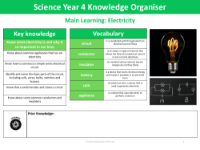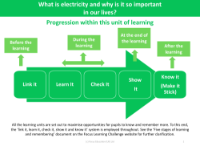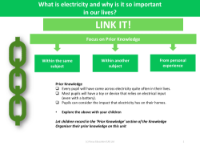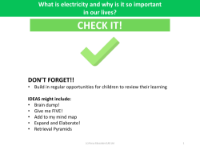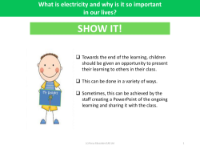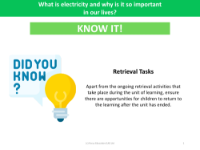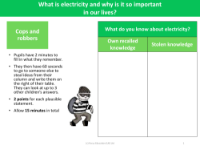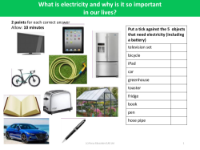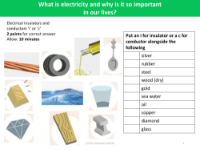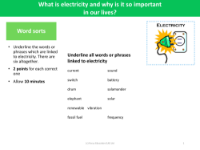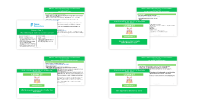Long-term overview - Electricity - Year 4
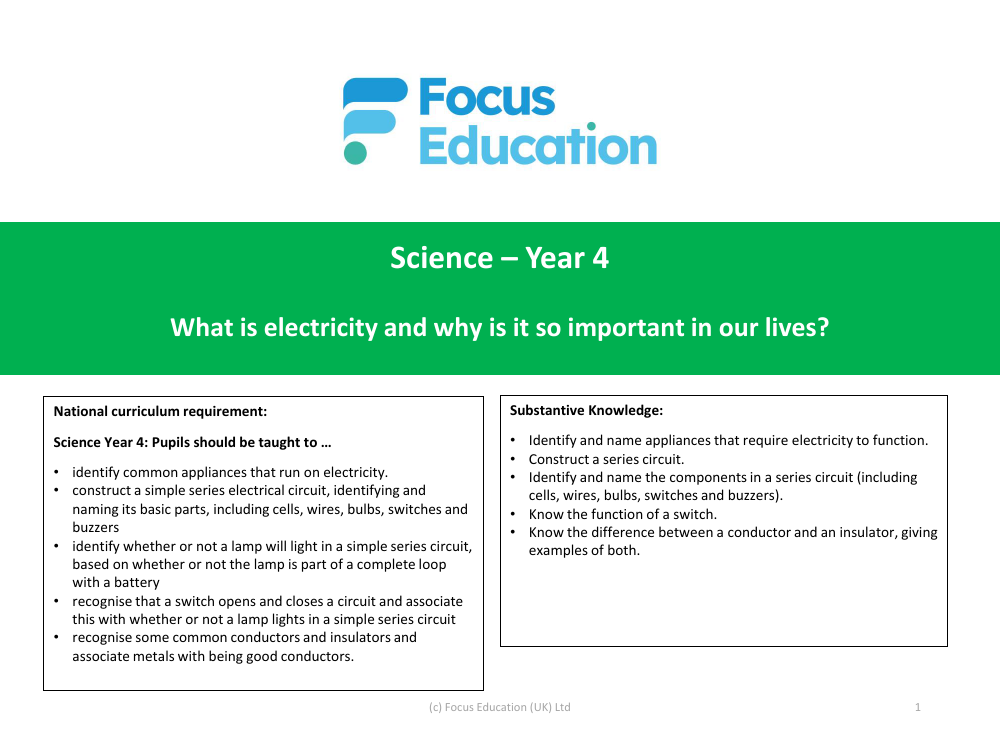
Science Resource Description
In the Year 4 science curriculum, pupils delve into the fascinating world of electricity, exploring its critical role in daily life and learning how to interact with it safely and knowledgeably. They are taught to identify everyday appliances that operate on electricity and gain hands-on experience by constructing simple series electrical circuits. The curriculum specifies that students should be able to recognise and name key components such as cells, wires, bulbs, switches, and buzzers. Additionally, pupils learn to determine if a lamp will illuminate within a circuit by understanding the necessity of a complete loop that includes a battery.
Furthering their understanding, students are introduced to the concept of switches, learning how they can open and close circuits, thereby controlling whether a lamp lights up. The curriculum also covers the fundamental differences between conductors and insulators, with an emphasis on the conductivity of various metals. Through practical activities, pupils engage in fair testing to identify materials that act as electrical conductors or insulators and make predictions regarding the functionality of a circuit. They also engage in grouping and classifying exercises, which helps them to distinguish between conductive and insulative materials, deepening their comprehension of how electricity operates in different contexts, from powering devices at home to the broader implications of renewable energy compared to fossil fuels.
